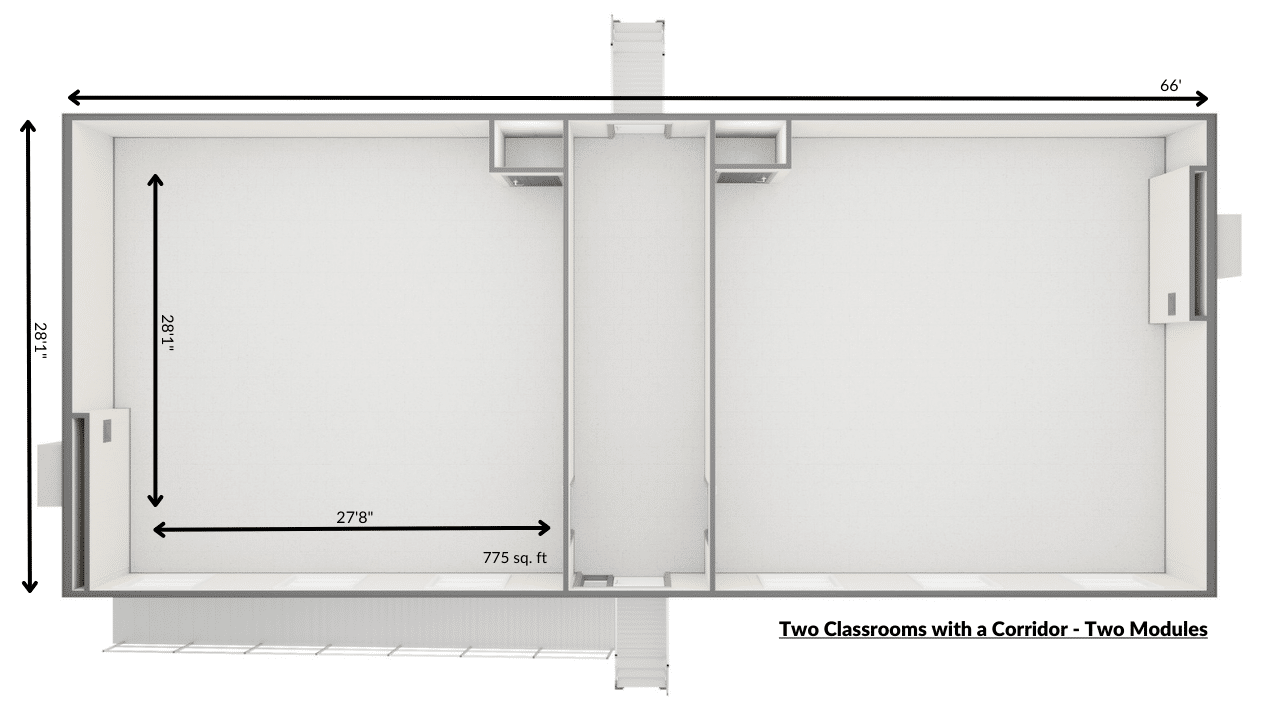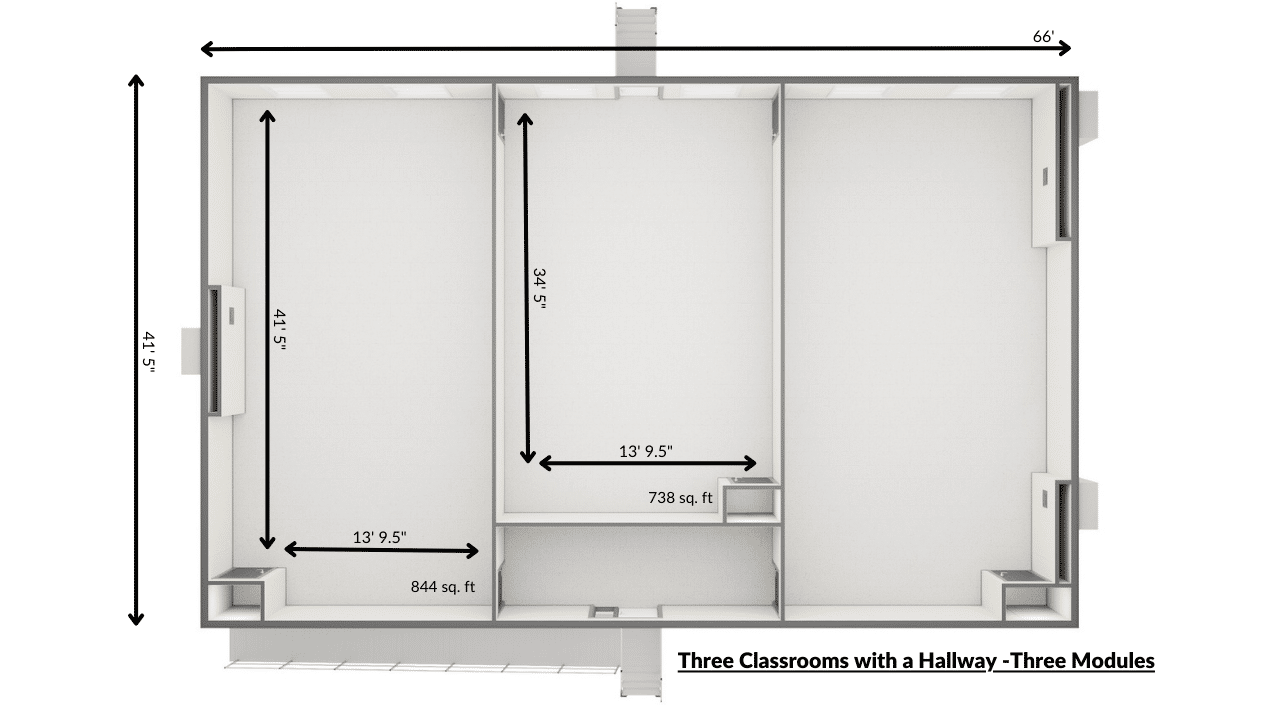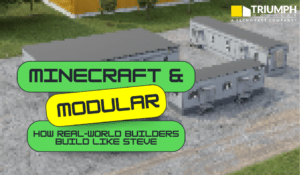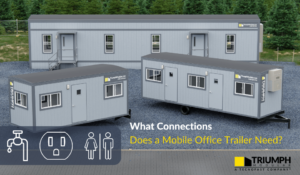Understanding the True Cost of Portable Classrooms: What Schools Need to Know
Our decision-making process for purchases includes several factors—however, the biggest of them is the price.
We know that schools and the education sector have tight budgets. We also know that with overcrowding and other unique needs on the horizon, portable classrooms provide a solution to solve space issues.
So, how much do portable classrooms cost?
As a provider of portable classrooms, we can give you insight into what factors affect portable classroom prices. We’ll also dive into how they differ from traditionally constructed classrooms.
Portable Classroom Cost Factors
There are six factors that influence the cost of your portable classroom:
- Whether it’s temporary or permanent
- Size
- Site work and utilities
- Setup and integration with existing school systems
- The complexity of the build
- Rental duration
Temporary or Permanent Portable Classroom?
One of the first choices you need to make for your modular classroom project is whether you need a temporary or permanent building. Costs will vary depending on which one you choose.
For temporary modular classrooms, costs would include a monthly lease, site work, installation costs, and removal costs.
If a permanent modular classroom is necessary, you’ll need to pay for the building itself, site work, and installation costs.
If you’re looking for more information on how temporary and permanent modular pricing works, our ebook, Lease vs. Buy, can help.
Portable Classroom Size
The size of your portable classroom building is one of the most important factors when considering the cost.
Everything works based on modules: In New England, a standard-sized module is 14 feet wide and comes in either 14’ x 66’ or 14’ x 70’ box sizes. For example, two modules could create two 775 square-foot classrooms with a center corridor, as shown here:

Meanwhile, three modules could create three classrooms with a hallway:

As you may have guessed, the larger the building, the more modules that are required.
From Triumph Modular, buildings are priced based on square footage. For leased buildings, you can expect a base of around $275 to $300 per square foot. Meanwhile, for purchased buildings, expect a base anywhere between $475 to $525 per square foot. The price-per-square-foot range includes the cost of the classroom (rent or purchase), delivery, installation, site prep, and site work. It’s around a 60/40 split for the cost of the space versus the other costs.
We mention the word “base” because the other factors we have listed here can affect the price. For example, the level of build-out and finishes can increase the price, depending on what’s chosen.
For more custom configurations outside of the standard-sized modules, you’ll likely pay more.
Site Work – Portable Classroom Construction
The amount of work needed to prepare the site will contribute to the overall cost of your modular classroom project in most cases.
The costs will depend on how difficult it is to prepare. For example, clearing the site for foundations and how far the building is from various utilities (water, sewer, electrical, data, fire alarm, etc.).
Even the state of the delivery area can affect the site work costs—is it difficult to truck in the building? Is a crane required?
Additionally, if you’re choosing Triumph Modular as the general contractor and you’re looking for a turn-key solution, there are some other site work costs that could come into play, including:
- Foundations – Foundations can come in four forms: Pre-cast blocks, grade beams, stem walls, or helical piles. Pre-cast blocks have the least site work involved, grade beams are the next step up, and stem walls are the foundation option most closely resembling traditional construction. Helical piles can be used if soil conditions are a concern. The corkscrew-style installation causes less earth displacement as the helical piles twist 20-60+ feet downward, finding the proper load-bearing depth.
- Grading and Paving – Grading and paving include several items, such as asphalt or concrete walkways, curbs, retaining walls, decorative walls, parking lot line striping, signage, prep work for play areas, and accessibility features.
- Landscaping – Landscaping includes elaborate playscapes, special decorative structures, and anything else your project requires to match the necessary aesthetic.
These are all factors that can affect the overall cost of your project.
Modular Classroom Setup and Integration With Existing School Systems
Building setup is another factor that can influence how much your portable classroom will cost.
Portable classroom projects often involve integrating with existing school systems, such as sprinklers, security, and electrical systems. Integrating your new modular classroom with these existing systems adds some additional costs. If there’s additional work to be done to update these systems, that will also add more to the total price of your build.
The Complexity of the Build
As your desired design gets more complicated, you can reasonably expect costs to start climbing.
For example, if all you need is a simple three-classroom layout with a restroom and an office, you pay significantly less than more complicated buildings with upwards of eight classrooms and intricate design elements to match existing aesthetics.
The complexity of site work can also contribute to the cost—turn-key elements such as grading, parking lots, entryways, and landscaping can all drive up the cost as they become more intricate.
The option to customize your building is always there—it’s just important to remember that as you get more complex, you’ll likely pay more.
Rental Duration
For those who choose to rent a portable classroom instead of purchase, you’ll need to take your rental duration into account.
While it’s true that renting for longer periods of time will cost more in the long run, there’s more nuance to it than that.
Rental prices are susceptible to supply and demand fluctuations—if there are fewer modular classrooms available for rent, prices will climb.
Longer lease terms can help avoid some of the turbulence in pricing. For example, a 3-year lease term versus a 1-year lease term. A longer contract commitment is a criterion used towards a monthly lease rate discount.
How Do Portable Classroom Costs Compare to Traditional Construction?
While it’s true that in some situations, choosing modular over traditional construction can save you money in the long run, this is not always the case.
The truth is that you get what you pay for—many times, choosing the cheapest route isn’t always the best course of action. You could end up with a building that doesn’t properly suit your needs.
However, what portable classrooms do offer over traditionally built structures is cost predictability. This is a crucial concept for the educational sector, which often has strict budgets to adhere to.
The modular construction process eliminates many of the variables that can alter pricing throughout the duration of the project. For example, a controlled factory setting with streamlined building processes eliminates much of the material damage that can occur on a traditional construction site. This cost predictability relies on minimal design changes, though. Modular construction allows for great customization, but once the project begins, it’s important to stick to the agreed-upon design to stick to the budget.
Minimal design changes also allow you to reap one of the largest benefits of modular construction, which is speed to occupancy. The fewer changes made, the quicker you can use your portable classroom.
Looking For More Information on Portable Classrooms?
There’s much to learn about portable classrooms, from costs to permits and beyond.
If you’re in the market for a portable classroom and you need more information, we can help. Our newest ebook, The Guide to Modular Classrooms, has everything you need to know about portable classrooms and how to get started on your next classroom project.
Download the Guide to Modular Classrooms today!




